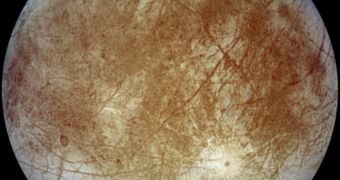The two agencies have decided on Wednesday that the investigation of Jupiter's and Saturn's systems is worth the expense of sending numerous space probes in the area starting with 2020. Also, for their upcoming joint mission, the two most important space agencies in the world have selected Saturn's moon Titan as its objective, which means that the importance of the region has been recognized at the highest levels. During the missions that are to start 11 years from now, various types of spacecraft will be launched to monitor the two gas giants and their moons, and, hopefully, they will provide scientists with new and exciting information about their composition and inner structure.
During the Europa Jupiter System Mission, NASA and ESA will be responsible for constructing and deploying one orbiter each. The American space agency is bound to be in charge with analyzing and monitoring the icy shell of Jupiter's moon Europa, whereas the European one is to have to investigate Ganymede, one of the largest moons in the solar system, which also seems to exhibit a very peculiar type of magnetic field. According to the agreement between the two parties, the crafts are due to be deployed in 2020, and will most likely reach their destination in 2026.
“I'm thrilled. We've been working long and hard on this. It's the right place to go to understand the potential habitability of icy satellites,” Jet Propulsion Laboratory (JPL) planetary scientist Robert Pappalardo, who has been working on the Europa mission studies for the better part of the last decade, shares.
“The decision means a win, win situation for all parties involved. Although the Jupiter system mission has been chosen to proceed to an earlier flight opportunity, a Saturn system mission clearly remains a high priority for the science community,” NASA's associate administrator for science missions Ed Weiler, from the agency's headquarters in Washington, DC, adds. This round of results comes after a meeting that the two agencies had last week in the American capital city, where the faith of future space exploration missions was discussed.
“For the Jupiter Europa mission, the overarching goal is to investigate the emergence of potentially habitable worlds around gas giants. We'll take a close look at Europa, to better define its habitability. We all firmly believe that there's an ocean under the ice of Europa. This mission is going to verify that using three different lines of inquiry,” NASA's program scientist for the outer planets Curt Niebur stresses.
“This joint endeavor is a wonderful new exploration challenge and will be a landmark of 21st century planetary science. What I am especially sure of is that the cooperation across the Atlantic that we have had so far and we see in the future, between America and Europe, NASA and ESA, and in our respective science communities is absolutely right. Let's get to work,” ESA's director of science and robotic exploration David Southwood concludes.

 14 DAY TRIAL //
14 DAY TRIAL //